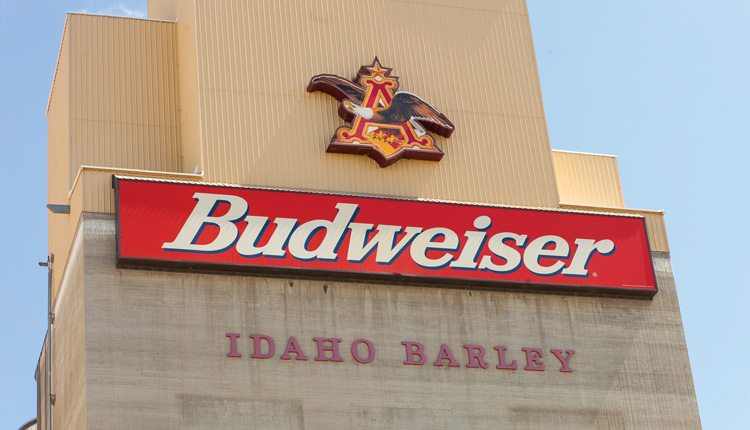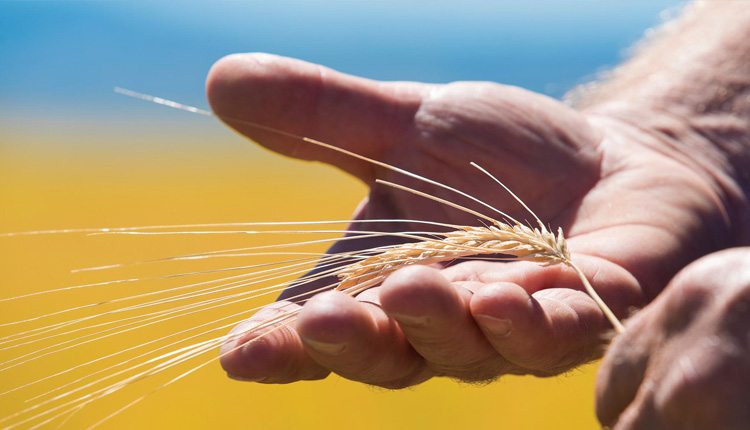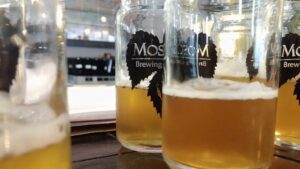Idaho has become a major player in providing barley for brewers around the world, thanks to new varieties and innovative farming practices.
It’s the sort of statistic you might expect to hear from Cliff Clavin, the know-it-all postal worker from the sitcom “Cheers,” as he extolled wisdom from his bar stool throughout the 1980s and 1990s.
“Idaho may be known for its potatoes, but it’s a little-known fact that about half the barley used to make the beers we’re drinking right now came from the Gem State, as it’s known,” Clavin might say.
Unlike many of the head-scratching “Clavinisms” popular on the show, however, this one is true.
John Drake, director of western malting operations for Anheuser-Busch, says that if you’re holding a six-pack of Budweiser or Bud Light, two or three of the beers in your hand were made from Idaho barley. That says something, especially when you consider that Bud and Bud Light are two of the top three beers in the country.
“Eastern Idaho is one of the best places in the world to grow barley,” Drake says. “We have an excellent climate for growing barley. We have nice warm days and cool nights, and we have just the right amount of moisture as well.”
Anheuser-Busch purchased an elevator and started contracting with maltsters in Idaho back in the 1970s, according to Kelly Olson, administrator at the Idaho Barley Commission. Since then, the company’s facilities have grown.
Today, parent company AB-InBev operates a barley elevator, a malting plant and seed facilities in Idaho Falls. Molson Coors, another global brewing powerhouse, also purchases barley from Idaho growers and operates a barley handling facility and a barley breeding research facility in the state. Great Western Malting Co., with a malting operation in Pocatello, largely serves the craft brewing industry.
“Anheuser-Busch has been steadily increasing their production base in Idaho since the 1970s,” Olson says. “That’s a plus for us. All these companies have been investing for decades, and we’ve benefited from that.”
Anheuser-Busch also contracts for the crop in other barley strongholds — Montana and North Dakota, in particular — but Drake says there’s something special about Idaho’s crop. “That’s one of the nice things here. We wind up with nice, bright, beautiful barley,” he says. “It’s very clean when it comes in.”
Climate and Disease
The main reason Idaho barley is of such a high quality is because of Idaho’s climate.
Most of the state is more than 2,000 feet above sea level, and the average is 5,000 feet. The average high temperature in the hottest months — July and August — is in the low 90s, and lows for those months are in the low 60s. The average rainfall in the wettest months is 1.5 inches, and most growing months receive less than an inch.
“We’re a relatively high elevation, dry climate, so we’re relatively disease-free,” Olson says.
Those cooler temperatures and little rainfall are key, as late precipitation can cause sprouting in the field or lead to mold growth, damaging quality for maltsters.
Some growers use a dryland technique, but others irrigate from a system of canals that funnel snowmelt from mountains to reservoirs and out to Idaho barley farms. That gives growers the opportunity to provide water at optimal times, increasing yield and improving grain characteristics.
“We can pretty much control the quality of the malt barley year after year,” Olson says.
That leads to plump kernels with low protein and high starch content. Maltsters partially germinate the barley, allowing brewers access to the starches in the grain. Those starches are converted to sugars during the mashing process. And those sugars, when fed to yeast, become the alcohol in beer.

Perfecting the Craft
The preferred variety for brewers these days is two-row barley. The grains on those plants are evenly spaced and have room to plump, as opposed to six-row varieties that are more tightly packed, have thinner grains and are higher in protein.
“Two-row is preferred by craft brewers because of the enzymes and the sugars that are in it. It’s just a little more conducive to what we’re doing as craft brewers,” says Max Shafer, cellar and barrel manager for Grand Teton Brewing Company in Victor, Idaho.
As an Idaho brewery, Grand Teton is proud to source its barley from its home state. But the quality is also key.
“We are really happy with the consistency we see in Idaho barley,” Shafer says.
Chris Swersey, supply chain specialist for the Brewer’s Association, a trade group for the craft brewing industry, says Idaho’s two-row barley varieties also have thinner hulls than six-row varieties, which can make a big difference when transporting large amounts of the grain. “If you’re going to be shipping malting barley all over the country, you’d rather be shipping extract than husks,” Swersey explains.
He can’t say how much of the barley supplying the craft industry is from Idaho, but he knows that a significant number of breweries work with Great Western Malting Co. The malting operation isn’t tied to a major brewer, so it serves the craft industry.
“We probably have hundreds of members that do work with Great Western,” Swersey says. “Idaho has really come on strong.”
Improving Barley Grain
While Idaho has done well in the malt barley world, there are always new challenges and room for improvement.
The large, international brewing companies have their own breeding programs aimed at improving water-use efficiency, drought tolerance, disease resistance and yield. Drake points to a couple varieties that have been important for AB-InBev and the growers with which it works.
The ABI Voyager variety, which took more than 14 years to develop, has high yields and resistance to spot blotch. The company also works with the Charles winter variety that uses about 25 percent less water than other barleys.
In addition, AB-InBev developed the SmartBarley platform that allows growers to benchmark their growing practices. They can see, for instance, the amount of fertilizers, water and other inputs that growers in similar climates or soils are using to determine if they want to tweak their own practices.
“That’s another thing we do to help growers and the region, to help reduce water usage and improve yield,” Drake says. “It’s a way of best-practice sharing from farmer to farmer.”
New innovations and research help Idaho’s barley industry, like recent developments in the fight against powdery mildew.
International Flavor
Olson says this year looks like a bumper crop for Idaho barley, and growers and maltsters may need to find new markets for their products. Spring barley, usually around 120 to 145 bushels per acre, is expected to near 180 bushels per acre this year.
“This year will go down in the record books for Idaho barley. It’s been an extraordinary year,” she says. “This is really good barley, so they can probably get it at a better price than previous years.”
But growers will need new buyers if they don’t want supply to outstrip demand. Olson says with yields on the rise, this may be the reason to start working on new international relationships in places like Central and Latin America.
“We’ve been selling to places like Mexico for a long time,” Olson says. “But it may be time to expand that reach.”













